Verdict - OnePlus 15
Although the OnePlus 15's specifications show it isn't intended to be Oppo's flagship camera phone, it's still capable of taking good photos.
The main focus is on performance, which is designed to operate without any artificial limitations. The downside, however, is that this can cause the phone to overheat and shut down. Furthermore, the phone throttles significantly under sustained load. Despite this, its Snapdragon 8 Elite Gen 5 means you won't have to worry about running out of power for apps or games.
The chassis is very high-quality, and its satin-finish frame lends the device a particularly premium feel.
The large 7,300 mAh battery has also made its way to Europe thanks to its dual-cell design. While it doesn't quite take the battery life crown, the OnePlus 15 is still a significant upgrade over its predecessor.
The screen displays movements very smoothly, and the phone feels very responsive thanks to its dedicated touch controller chip.
However, users will have to put up with PWM flickering, so anyone sensitive to such issues should try out the screen before parting with their cash.
The sub $1,000 price makes the OnePlus 15 attractive for budget-conscious users for whom the camera isn't the most crucial factor.
Pros
Cons
Price and availability
At the time of reviewing, purchasing the $999 smartphone directly from the manufacturer will also get you a free OnePlus Watch3.
However, importing the device from China can save you significantly more: The phone has a starting price of $632 if bought from our rental partner, TradingShenzhen.
Table of Contents
- Verdict - OnePlus 15
- Specifications
- Case – A matte ceramic coating
- Features – Extra fast RAM
- Software – 6-year updates
- Communication and GNSS – A world phone
- Telephone functions and voice quality – Loud and clear
- Cameras – Hasselblad, adieu!
- Accessories and warranty – No charger in Europe
- Input devices and operation – Dedicated touch controller
- Display – Bright and fast, but with PWM
- Performance – Speedy but with throttling issues
- Games – Up to 165fps is possible
- Emissions – Things can get hot
- Battery runtime – Work for days on end thanks to the huge battery
- Notebookcheck overall rating
- Possible alternatives compared
When it started out, OnePlus was revolutionary: significantly cheaper than the established competition, yet very well-equipped and boasting premium workmanship. Furthermore, they always cared about what the community had to say and implemented feedback in future models.
However, OnePlus's current models no longer quite live up to this legendary reputation. This is partly because the brand has had to differentiate itself internally from the smartphones of its sister company, Oppo, and often comes up short in this regard.
Nevertheless, the OnePlus 15 is once again an exciting smartphone that is somewhat cheaper than other high-end phones, yet still well-equipped.
Specifications
Case – A matte ceramic coating
When it comes to the case, OnePlus is trying to forge its own path, and is also clearly inspired by the smartphone giant, Apple: The rounded screen corners, the action button placement, and the printed antennas could fool a less experienced user into thinking they're holding a phone from California rather than Shenzhen.
However, the design is also unique thanks to its matte finish: OnePlus uses a process called Micro-Arc Oxidation, which leaves a ceramic protective layer both on the metal of the frame and camera module.
Unfortunately, this finish is only available for the Sand Storm color option, which we were able to test. Opting for this color, however, means you'll have to accept that the back is made of fiberglass-reinforced plastic. In contrast, the Infinite Black and Ultra Violet versions have a glass back.
The phone is sturdy, but we heard a very faint creaking sound when attempting to twist it, and this is something that should be absent in this price range. It offers IP68/IP69 water and dust resistance.
The front features very thin display bezels, and screen protection is provided by the modern Gorilla Glass Victus 2.
Features – Extra fast RAM
A USB 3.1 Gen 1 port with data throughput of up to 5 Mbps and DisplayPort are standard features on high-end phones, and the OnePlus 15 delivers on this front. One bonus is the included infrared port, which can be used to control devices such as TVs. Although UWB for easy device discovery isn't included, Bluetooth 6.0 offers similar functionality.
NFC allows for mobile payments and the reading of tags or ID cards.
The OnePlus 15 is available in two storage configurations:
- OnePlus 15 256 GB UFS 4.1 flash, 12 GB of LPDDR5X Ultra RAM
- OnePlus 15 512 GB UFS 4.1 flash, 16 GB of LPDDR5X Ultra+ RAM
OnePlus has managed to squeeze even more speed out of the RAM in the larger storage variant. The price difference between the storage options is currently around $50.
There is no microSD card slot, and although the import model does not support eSIM, the European models do, and even support two eSIM profiles.
Software – 6-year updates
The China-based lender, TradingShenzhen, provided us with our review unit that came pre-installed with ColorOS, and not the global OxygenOS.
The differences aren't significant; for example, you can select European languages with the Chinese ROM, and Android Auto should also work. However, after extensive testing, TradingShenzhen now offers import models with OxygenOS pre-installed.
The main difference between the software versions is that no Chinese apps are pre-installed, and Google services don't have to be activated separately. Both operating systems are very responsive and intuitive to use. They come with a good gallery app with comprehensive AI editing options and a wide range of settings. However, a few minor translation errors (in German) are also to be found in OxygenOS.
The OnePlus 15 is said to receive six years of security updates and four major Android updates. According to the EPREL database, we can expect at least 5 years of updates. This is still too short to conform to EU regulations, so it will be interesting to see how strictly this is handled by the EU.
Sustainability
OnePlus offers repair manuals and spare parts for its smartphones, enabling users to carry out repairs themselves. According to the EPREL database, the repairability has received a B rating, the second-highest possible grade. Repair costs can also be viewed in advance.
According to the manufacturer's website, the phone is over 90% recyclable; however, no information has been provided regarding the recycled materials used. There is also no information concerning its carbon footprint.
Communication and GNSS – A world phone
Modern WiFi 7 is supported, but our Asus ROG Rapture AXE11000 reference router only supports WiFi 6E. This allows for a connection via the less congested 6 GHz band.
In our test, the OnePlus 15 achieved only mediocre transfer speeds, and other smartphones, including its predecessor, were faster. A gigabit internet connection can easily be utilized with the OnePlus 15, but anyone who relies on even higher speeds within their own networks will quickly find their limits.
Both the Chinese import and the European versions of the OnePlus 15 are truly global phones and can connect to mobile networks almost anywhere in the world. Reception is excellent, even in challenging situations, as demonstrated by several spot tests during our analysis, including in narrow streets.
| Networking | |
| OnePlus 15 | |
| iperf3 transmit AXE11000 6GHz | |
| iperf3 receive AXE11000 6GHz | |
| OnePlus 13 | |
| iperf3 transmit AXE11000 | |
| iperf3 receive AXE11000 | |
| iperf3 transmit AXE11000 6GHz | |
| iperf3 receive AXE11000 6GHz | |
| Oppo Find X9 Pro | |
| iperf3 transmit AXE11000 | |
| iperf3 receive AXE11000 | |
| Samsung Galaxy S25 Ultra | |
| iperf3 transmit AXE11000 | |
| iperf3 receive AXE11000 | |
| iperf3 transmit AXE11000 6GHz | |
| iperf3 receive AXE11000 6GHz | |
| Xiaomi 17 Pro Max | |
| iperf3 transmit AXE11000 | |
| iperf3 receive AXE11000 | |
| iperf3 transmit AXE11000 6GHz | |
| iperf3 receive AXE11000 6GHz | |
| Average 802.11 a/b/g/n/ac/ax/be | |
| iperf3 transmit AXE11000 | |
| iperf3 receive AXE11000 | |
| iperf3 transmit AXE11000 6GHz | |
| iperf3 receive AXE11000 6GHz | |
| Average of class Smartphone | |
| iperf3 transmit AXE11000 | |
| iperf3 receive AXE11000 | |
| iperf3 transmit AXE11000 6GHz | |
| iperf3 receive AXE11000 6GHz | |
Outdoors, the OnePlus 15 quickly pinpointed our location to within a few meters. All major satellite systems are available for positioning, but unfortunately, the device lacks SBAS for even greater accuracy.
We aimed to test the positioning in real-life situations on a bike trip. In addition, we also used the Garmin Venu 2, a smartwatch with very accurate positioning.
Both devices calculated exactly the same distance, and the OnePlus 15 accurately represented our route. On the bridge, we were placed a few meters off our actual path, but overall, the phone is very well-suited for navigation and location tracking.
Telephone functions and voice quality – Loud and clear
If you're using the Chinese ColorOS, you have your own dedicated phone app, while OxygenOS uses Google's phone app. The OnePlus app can even detect if a caller's voice is AI-generated.
The call quality via the earpiece is very good, and our voice was also transmitted clearly in a test call. Calls work flawlessly via the speakerphone and the hands-free microphone, although the noise cancellation could be improved.
Cameras – Hasselblad, adieu!
The OnePlus 15's camera system has been scaled back, and the Hasselblad partnership has been removed. To internally differentiate it from the Oppo Find X9 Pro, it also has slightly less light-sensitive sensors at its disposal.
Nevertheless, the 50-megapixel main camera takes very good photos, which can easily be enlarged. They are both detailed and color-accurate. Even in low light and high-contrast situations, strong detail reproduction is still present, and some detail is only lost in dark areas.
Videos can be recorded at up to 8K at 30fps. At 4K, you can even achieve slow-motion effects at up to 120fps, and the image quality is very good.
The telephoto camera is fitted with a periscope zoom. It also possesses a 50-megapixel resolution and achieves a 7x optical zoom compared to the main camera. Photos taken at maximum optical zoom still appear very detailed.
The ultrawide camera also has a 50-megapixel resolution, but snapshots taken from longer distances have barely discernible details.
Image comparison
Choose a scene and navigate within the first image. One click changes the position on touchscreens. One click on the zoomed-in image opens the original in a new window. The first image shows the scaled photograph of the test device.
PlantEnvironmentLow lightWide-angle cameraWe would like to have seen a bit more sharpness under full studio lighting, but the subject was still very clearly recognizable at only 1 lux illumination.
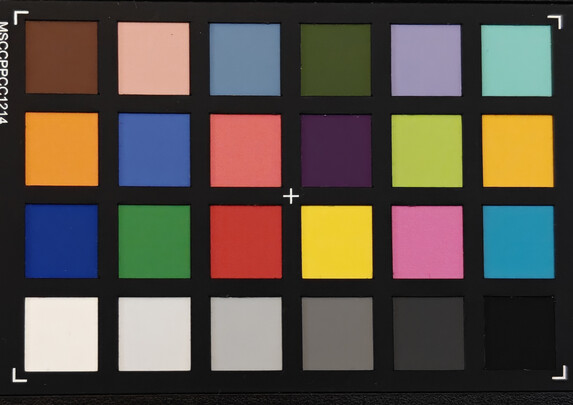
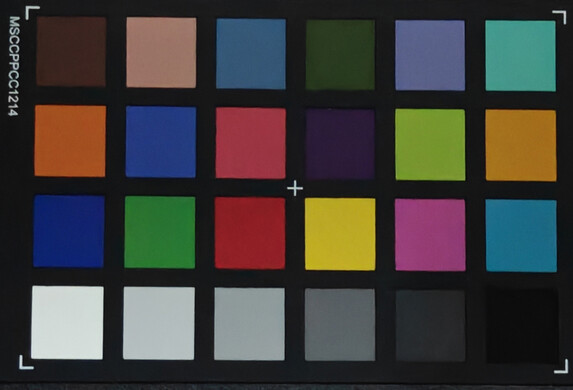
Accessories and warranty – No charger in Europe
The OnePlus 15 comes with a charger in China, but not in Europe. OnePlus traditionally offers a wide range of accessories, such as stylish cases and charging cables.
OnePlus phones purchased in Europe come with a 24-month warranty. TradingShenzhen allows warranty claims for its Chinese imported devices to be processed via a German address.
Input devices and operation – Dedicated touch controller
The touchscreen is said to respond to touch inputs up to 3,200 times per second. This is made possible by a custom-designed chip, and the result is indeed a OnePlus 15 that feels very fast and responsive.
The fingerprint sensor is located beneath the screen, but unusually high up. In practice, this proves quite convenient since you never have to reposition your hand. It's also equally easy for right- and left-handed users to operate, and even users with small hands will have no issues.
Face recognition is also possible, but only using 2D scanning via the front camera.
Display – Bright and fast, but with PWM
The display offers a slightly lower resolution than its predecessor, but it can display images at up to 165 Hz. However, this only works in specially adapted games; otherwise, it tops out at 120 Hz.
The maximum brightness in everyday situations is around 1,100 cd/m², which is typical for its class. In small areas, we measured approximately 1,434 cd/m². When viewing HDR content, up to 1,800 cd/m² is said to be possible in certain areas. This is good, but not exactly record-breaking.
Color reproduction is very accurate, and no deviations are perceptible to the naked eye.
The PWM flickering we measured is adapted to the 120 Hz refresh rate, and this helps to make it somewhat less distracting. The PWM rate can also be increased in the options to potentially alleviate any such issues.
| |||||||||||||||||||||||||
Brightness Distribution: 97 %
Center on Battery: 1114 cd/m²
Contrast: ∞:1 (Black: 0 cd/m²)
ΔE ColorChecker Calman: 1.33 | ∀{0.5-29.43 Ø4.78}
ΔE Greyscale Calman: 1.9 | ∀{0.09-98 Ø5}
99.9% sRGB (Calman 2D)
Gamma: 2.273
CCT: 6708 K
| OnePlus 15 AMOLED, 2772x1272, 6.8" | OnePlus 13 AMOLED, 3168x1440, 6.8" | Oppo Find X9 Pro LTPO AMOLED, 2772x1272, 6.8" | Samsung Galaxy S25 Ultra Dynamic AMOLED 2X, 3120x1440, 6.9" | Xiaomi 17 Pro Max AMOLED, 2608x1200, 6.9" | |
|---|---|---|---|---|---|
| Screen | 13% | 8% | -34% | 5% | |
| Brightness middle (cd/m²) | 1114 | 1155 4% | 1105 -1% | 1357 22% | 1099 -1% |
| Brightness (cd/m²) | 1109 | 1155 4% | 1084 -2% | 1350 22% | 1067 -4% |
| Brightness Distribution (%) | 97 | 98 1% | 95 -2% | 94 -3% | 95 -2% |
| Black Level * (cd/m²) | |||||
| Colorchecker dE 2000 * | 1.33 | 1 25% | 1.02 23% | 3.1 -133% | 1.05 21% |
| Colorchecker dE 2000 max. * | 2.42 | 1.8 26% | 2.32 4% | 4.7 -94% | 2.38 2% |
| Greyscale dE 2000 * | 1.9 | 1.6 16% | 1.4 26% | 2.2 -16% | 1.7 11% |
| Gamma | 2.273 97% | 2.3 96% | 2.244 98% | 2 110% | 2.232 99% |
| CCT | 6708 97% | 6503 100% | 6411 101% | 6391 102% | 6779 96% |
* ... smaller is better
Screen Flickering / PWM (Pulse-Width Modulation)
| Screen flickering / PWM detected | 120 Hz Amplitude: 15 % | ||
The display backlight flickers at 120 Hz (worst case, e.g., utilizing PWM) . The frequency of 120 Hz is very low, so the flickering may cause eyestrain and headaches after extended use. In comparison: 53 % of all tested devices do not use PWM to dim the display. If PWM was detected, an average of 8142 (minimum: 5 - maximum: 343500) Hz was measured. | |||
A series of measurements with a fixed zoom level and different brightness settings (The amplitude curve at minimum brightness appears flat, but this is due to the scaling. The enlarged version of the amplitude at minimum brightness can be seen in the info box.)
Display Response Times
| ↔ Response Time Black to White | ||
|---|---|---|
| 2.8 ms ... rise ↗ and fall ↘ combined | ↗ 1.5 ms rise | |
| ↘ 1.3 ms fall | ||
| The screen shows very fast response rates in our tests and should be very well suited for fast-paced gaming. In comparison, all tested devices range from 0.1 (minimum) to 240 (maximum) ms. » 12 % of all devices are better. This means that the measured response time is better than the average of all tested devices (20.2 ms). | ||
| ↔ Response Time 50% Grey to 80% Grey | ||
| 3 ms ... rise ↗ and fall ↘ combined | ↗ 1.6 ms rise | |
| ↘ 1.4 ms fall | ||
| The screen shows very fast response rates in our tests and should be very well suited for fast-paced gaming. In comparison, all tested devices range from 0.165 (minimum) to 636 (maximum) ms. » 11 % of all devices are better. This means that the measured response time is better than the average of all tested devices (31.7 ms). | ||
Performance – Speedy but with throttling issues
The OnePlus 15 features the new Qualcomm Snapdragon 8 Elite Gen 5 GPU, which makes it one of the fastest SoCs currently available. However, our observations in other smartphones have shown that it isn't always able to deliver its full potential, heating up too quickly to be adequately cooled within the compact smartphone's chassis.
The OnePlus 15 seems to have particular problems with this, with it even lagging behind its predecessor, the OnePlus 13, in almost every benchmark. Under very heavy load, some benchmarks even crashed, such as our temperature monitoring test using the Burnout benchmark or the stress tests. However, the SoC remained stable during our tests running demanding apps or games.
| UL Procyon AI Inference for Android - Overall Score NNAPI | |
| Samsung Galaxy S25 Ultra | |
| Average Qualcomm Snapdragon 8 Elite Gen 5 (22372 - 23712, n=5) | |
| OnePlus 13 | |
| OnePlus 15 | |
| Xiaomi 17 Pro Max | |
| Average of class Smartphone (3769 - 81594, n=138, last 2 years) | |
| Oppo Find X9 Pro | |
The graphics performance also highlights that the SoC is unable to reach its full potential. However, the manufacturer and Qualcomm might be able to improve this with patches. Nevertheless, every kind of mobile game should run on this graphics card, and this ought to continue for the next few years.
Technologically, it has almost everything you could desire. From ray tracing and mesh shading to tile memory heaps, many current gaming technologies are available.
GFXBench (DX / GLBenchmark) 2.7: T-Rex Onscreen | 1920x1080 T-Rex Offscreen
GFXBench 3.0: on screen Manhattan Onscreen OGL | 1920x1080 1080p Manhattan Offscreen
GFXBench 3.1: on screen Manhattan ES 3.1 Onscreen | 1920x1080 Manhattan ES 3.1 Offscreen
GFXBench: on screen Car Chase Onscreen | 1920x1080 Car Chase Offscreen | on screen Aztec Ruins High Tier Onscreen | 2560x1440 Aztec Ruins High Tier Offscreen | on screen Aztec Ruins Normal Tier Onscreen | 1920x1080 Aztec Ruins Normal Tier Offscreen | 3840x2160 4K Aztec Ruins High Tier Offscreen
| 3DMark / Wild Life Extreme Unlimited | |
| Oppo Find X9 Pro | |
| OnePlus 15 | |
| Samsung Galaxy S25 Ultra | |
| OnePlus 13 | |
| Xiaomi 17 Pro Max | |
| 3DMark / Wild Life Extreme | |
| Oppo Find X9 Pro | |
| OnePlus 15 | |
| Samsung Galaxy S25 Ultra | |
| OnePlus 13 | |
| Xiaomi 17 Pro Max | |
| 3DMark / Wild Life Unlimited Score | |
| Samsung Galaxy S25 Ultra | |
| Oppo Find X9 Pro | |
| OnePlus 15 | |
| OnePlus 13 | |
| Xiaomi 17 Pro Max | |
| 3DMark / Solar Bay Score | |
| Oppo Find X9 Pro | |
| OnePlus 15 | |
| Samsung Galaxy S25 Ultra | |
| OnePlus 13 | |
| Xiaomi 17 Pro Max | |
| 3DMark / Solar Bay Unlimited Score | |
| Oppo Find X9 Pro | |
| Samsung Galaxy S25 Ultra | |
| OnePlus 15 | |
| OnePlus 13 | |
| Xiaomi 17 Pro Max | |
| 3DMark / Steel Nomad Light Unlimited Score | |
| Oppo Find X9 Pro | |
| OnePlus 15 | |
| OnePlus 13 | |
| Samsung Galaxy S25 Ultra | |
| 3DMark / Steel Nomad Light Score | |
| Oppo Find X9 Pro | |
| OnePlus 15 | |
| Samsung Galaxy S25 Ultra | |
| OnePlus 13 | |
| GFXBench (DX / GLBenchmark) 2.7 / T-Rex Onscreen | |
| Samsung Galaxy S25 Ultra | |
| Xiaomi 17 Pro Max | |
| OnePlus 13 | |
| Oppo Find X9 Pro | |
| OnePlus 15 | |
| GFXBench (DX / GLBenchmark) 2.7 / T-Rex Offscreen | |
| Oppo Find X9 Pro | |
| OnePlus 13 | |
| OnePlus 15 | |
| Samsung Galaxy S25 Ultra | |
| Xiaomi 17 Pro Max | |
| GFXBench 3.0 / Manhattan Onscreen OGL | |
| Samsung Galaxy S25 Ultra | |
| Xiaomi 17 Pro Max | |
| OnePlus 13 | |
| Oppo Find X9 Pro | |
| OnePlus 15 | |
| GFXBench 3.0 / 1080p Manhattan Offscreen | |
| Oppo Find X9 Pro | |
| OnePlus 13 | |
| Samsung Galaxy S25 Ultra | |
| OnePlus 15 | |
| Xiaomi 17 Pro Max | |
| GFXBench 3.1 / Manhattan ES 3.1 Onscreen | |
| Samsung Galaxy S25 Ultra | |
| Xiaomi 17 Pro Max | |
| OnePlus 13 | |
| Oppo Find X9 Pro | |
| OnePlus 15 | |
| GFXBench 3.1 / Manhattan ES 3.1 Offscreen | |
| Oppo Find X9 Pro | |
| OnePlus 13 | |
| OnePlus 15 | |
| Samsung Galaxy S25 Ultra | |
| Xiaomi 17 Pro Max | |
| GFXBench / Car Chase Onscreen | |
| Samsung Galaxy S25 Ultra | |
| Xiaomi 17 Pro Max | |
| OnePlus 13 | |
| Oppo Find X9 Pro | |
| OnePlus 15 | |
| GFXBench / Car Chase Offscreen | |
| OnePlus 13 | |
| OnePlus 15 | |
| Oppo Find X9 Pro | |
| Samsung Galaxy S25 Ultra | |
| Xiaomi 17 Pro Max | |
| GFXBench / Aztec Ruins High Tier Onscreen | |
| Samsung Galaxy S25 Ultra | |
| Xiaomi 17 Pro Max | |
| OnePlus 13 | |
| Oppo Find X9 Pro | |
| OnePlus 15 | |
| GFXBench / Aztec Ruins High Tier Offscreen | |
| OnePlus 13 | |
| Oppo Find X9 Pro | |
| Samsung Galaxy S25 Ultra | |
| OnePlus 15 | |
| Xiaomi 17 Pro Max | |
| GFXBench / Aztec Ruins Normal Tier Onscreen | |
| Samsung Galaxy S25 Ultra | |
| Xiaomi 17 Pro Max | |
| OnePlus 13 | |
| Oppo Find X9 Pro | |
| OnePlus 15 | |
| GFXBench / Aztec Ruins Normal Tier Offscreen | |
| OnePlus 13 | |
| Oppo Find X9 Pro | |
| Samsung Galaxy S25 Ultra | |
| OnePlus 15 | |
| Xiaomi 17 Pro Max | |
| GFXBench / 4K Aztec Ruins High Tier Offscreen | |
| Samsung Galaxy S25 Ultra | |
| OnePlus 13 | |
| Oppo Find X9 Pro | |
| OnePlus 15 | |
| Xiaomi 17 Pro Max | |
Web browsing is fast and, in most cases, lag-free. Images are almost always available immediately while scrolling.
Despite this, the phone performed poorly in benchmarks, with the OnePlus 13 and its previous generation chip almost always faster.
| Jetstream 2 - 2.0 Total Score | |
| Samsung Galaxy S25 Ultra (Chrome 132) | |
| OnePlus 13 (Chrome 131) | |
| Average of class Smartphone (23.8 - 387, n=153, last 2 years) | |
| OnePlus 15 (Chrome 142) | |
| Average Qualcomm Snapdragon 8 Elite Gen 5 (70.1 - 146.2, n=4) | |
| Xiaomi 17 Pro Max (Chrome 141) | |
| Speedometer 2.0 - Result 2.0 | |
| Xiaomi 17 Pro Max (Chrome 141) | |
| Average Qualcomm Snapdragon 8 Elite Gen 5 (593 - 624, n=3) | |
| OnePlus 15 (Chrome 142) | |
| Samsung Galaxy S25 Ultra (Chrome 132) | |
| OnePlus 13 (Chrome 140) | |
| Average of class Smartphone (15.2 - 643, n=130, last 2 years) | |
| Speedometer 3 - Score 3.0 | |
| OnePlus 13 (Chrome 131) | |
| Samsung Galaxy S25 Ultra (Chrome 132) | |
| OnePlus 15 (Chrome 142) | |
| Xiaomi 17 Pro Max (Chrome 141) | |
| Average Qualcomm Snapdragon 8 Elite Gen 5 (16.5 - 21.3, n=4) | |
| Oppo Find X9 Pro (Chrome 141) | |
| Average of class Smartphone (1.03 - 42.8, n=124, last 2 years) | |
| WebXPRT 4 - Overall | |
| Xiaomi 17 Pro Max (Chrome 141) | |
| OnePlus 15 (Chrome 142) | |
| Samsung Galaxy S25 Ultra (Chrome 132) | |
| OnePlus 13 (Chrome 131) | |
| Average Qualcomm Snapdragon 8 Elite Gen 5 (102 - 278, n=5) | |
| Average of class Smartphone (27 - 306, n=147, last 2 years) | |
| Oppo Find X9 Pro (Chrome 141) | |
| Octane V2 - Total Score | |
| Xiaomi 17 Pro Max (Chrome 141) | |
| Samsung Galaxy S25 Ultra (Chrome 132) | |
| OnePlus 15 (Chrome 142) | |
| OnePlus 13 (Chrome 131) | |
| Average Qualcomm Snapdragon 8 Elite Gen 5 (50987 - 99417, n=5) | |
| Oppo Find X9 Pro (Chrome 141) | |
| Average of class Smartphone (2228 - 121337, n=200, last 2 years) | |
| Mozilla Kraken 1.1 - Total | |
| Average of class Smartphone (257 - 28190, n=155, last 2 years) | |
| Oppo Find X9 Pro (Chrome 141) | |
| Average Qualcomm Snapdragon 8 Elite Gen 5 (306 - 635, n=5) | |
| OnePlus 13 (Chrome 131) | |
| Samsung Galaxy S25 Ultra (Chrome 132) | |
| OnePlus 15 (Chrome 142) | |
| Xiaomi 17 Pro Max (Chrome 141) | |
* ... smaller is better
The UFS 4.1 flash handles data transfers quite quickly, and loading times are short.
| OnePlus 15 | OnePlus 13 | Oppo Find X9 Pro | Samsung Galaxy S25 Ultra | Xiaomi 17 Pro Max | Average 512 GB UFS 4.1 Flash | Average of class Smartphone | |
|---|---|---|---|---|---|---|---|
| AndroBench 3-5 | -3% | -32% | -8% | 32% | 5% | -28% | |
| Sequential Read 256KB (MB/s) | 3962.2 | 3984.23 1% | 3219.8 -19% | 3823.28 -4% | 3971.4 0% | 3816 ? -4% | 2227 ? -44% |
| Sequential Write 256KB (MB/s) | 3741.2 | 3684.36 -2% | 1239.76 -67% | 3361.24 -10% | 3899.9 4% | 3282 ? -12% | 1843 ? -51% |
| Random Read 4KB (MB/s) | 352.6 | 301.29 -15% | 367.54 4% | 287.85 -18% | 548.4 56% | 379 ? 7% | 295 ? -16% |
| Random Write 4KB (MB/s) | 334.4 | 344.63 3% | 176.98 -47% | 331.61 -1% | 561.3 68% | 434 ? 30% | 335 ? 0% |
Games – Up to 165fps is possible
When it comes to gaming, OnePlus aims to show the way, with frame rates of up to 165fps. This should be feasible in titles such as Call of Duty Mobile. Now, let's put that to the test.
Normally, we can already play smoothly at up to 60fps at maximum settings. However, even at medium details, 165fps is achievable and consistently maintained. This makes for extremely smooth gameplay.
The improved touch sensitivity can be activated in the gaming overlay, and even professional gamers will find it a suitable environment.
Other games also run smoothly, even at high detail settings. We measured the frame rates using the GameBench software.
Emissions – Things can get hot
Temperature
We measured a noticeable increase in the case temperature under load, hitting almost 50°C. The burnout benchmark repeatedly failed to complete as the device needed to cool down.
A few 3DMark stress tests also failed to run. When we finally managed to complete runs, the throttling was severe, with the remaining performance after several benchmark runs ranging between 52% and 62%.
(-) The maximum temperature on the upper side is 47.1 °C / 117 F, compared to the average of 35.2 °C / 95 F, ranging from 21.9 to 247 °C for the class Smartphone.
(-) The bottom heats up to a maximum of 49.7 °C / 121 F, compared to the average of 34 °C / 93 F
(+) In idle usage, the average temperature for the upper side is 25.8 °C / 78 F, compared to the device average of 32.9 °C / 91 F.
3DMark Stress Tests
| 3DMark | |
| Wild Life Stress Test Stability | |
| Oppo Find X9 Pro | |
| OnePlus 15 | |
| Xiaomi 17 Pro Max | |
| OnePlus 13 | |
| Samsung Galaxy S25 Ultra | |
| Wild Life Extreme Stress Test | |
| Xiaomi 17 Pro Max | |
| Samsung Galaxy S25 Ultra | |
| OnePlus 15 | |
| OnePlus 13 | |
| Oppo Find X9 Pro | |
| Solar Bay Stress Test Stability | |
| Xiaomi 17 Pro Max | |
| Samsung Galaxy S25 Ultra | |
| OnePlus 13 | |
| Oppo Find X9 Pro | |
| Steel Nomad Light Stress Test Stability | |
| OnePlus 13 | |
| Samsung Galaxy S25 Ultra | |
| Oppo Find X9 Pro | |
Speakers
The two speakers housed inside the OnePlus 15 sound very clear and perform well even at maximum volume. Although 80.4 dB(A) isn't record-breaking, the phone still gets loud enough to fill a medium-sized room with sound.
Anyone preferring to connect external audio devices or headphones can do so via Bluetooth or USB. The most important codecs are supported for wireless transmission: SBC, AAC, aptX, aptX HD, aptX Adaptive, aptX TWS+, as well as LDAC and LHDC.
OnePlus 15 audio analysis
(±) | speaker loudness is average but good (80.4 dB)
Bass 100 - 315 Hz
(-) | nearly no bass - on average 15% lower than median
(±) | linearity of bass is average (9.3% delta to prev. frequency)
Mids 400 - 2000 Hz
(+) | balanced mids - only 4.7% away from median
(+) | mids are linear (4.9% delta to prev. frequency)
Highs 2 - 16 kHz
(+) | balanced highs - only 3.4% away from median
(+) | highs are linear (6.4% delta to prev. frequency)
Overall 100 - 16.000 Hz
(+) | overall sound is linear (14% difference to median)
Compared to same class
» 1% of all tested devices in this class were better, 1% similar, 98% worse
» The best had a delta of 11%, average was 35%, worst was 134%
Compared to all devices tested
» 15% of all tested devices were better, 4% similar, 81% worse
» The best had a delta of 4%, average was 24%, worst was 134%
Xiaomi 17 Pro Max audio analysis
(+) | speakers can play relatively loud (85.8 dB)
Bass 100 - 315 Hz
(±) | reduced bass - on average 10.1% lower than median
(±) | linearity of bass is average (12.2% delta to prev. frequency)
Mids 400 - 2000 Hz
(+) | balanced mids - only 3.8% away from median
(+) | mids are linear (4% delta to prev. frequency)
Highs 2 - 16 kHz
(+) | balanced highs - only 4.4% away from median
(±) | linearity of highs is average (8.4% delta to prev. frequency)
Overall 100 - 16.000 Hz
(+) | overall sound is linear (11.2% difference to median)
Compared to same class
» 0% of all tested devices in this class were better, 0% similar, 100% worse
» The best had a delta of 11%, average was 35%, worst was 134%
Compared to all devices tested
» 6% of all tested devices were better, 2% similar, 92% worse
» The best had a delta of 4%, average was 24%, worst was 134%
Battery runtime – Work for days on end thanks to the huge battery
Power consumption
Power consumption was relatively high even under light loads, and the review device never dropped below 1.2 watts. The maximum power consumption of 12.3 watts is also slightly higher than most comparable devices, but significantly lower than the Samsung Galaxy S25 Ultra. All in all, the OnePlus 15 proves itself to be only moderately efficient.
The phone can be charged at a generous 120 watts, but only the Chinese import version comes with a compatible charger. This allows the phone to be fully recharged in just over an hour. Wireless charging is possible at up to 50 watts, and reverse charging with or without a cable is also supported.
| Off / Standby | |
| Idle | |
| Load |
|
Key:
min: | |
| OnePlus 15 7300 mAh | OnePlus 13 6000 mAh | Oppo Find X9 Pro 7500 mAh | Samsung Galaxy S25 Ultra 5000 mAh | Xiaomi 17 Pro Max 7500 mAh | Average Qualcomm Snapdragon 8 Elite Gen 5 | Average of class Smartphone | |
|---|---|---|---|---|---|---|---|
| Power Consumption | -11% | 21% | 1% | 29% | 12% | 8% | |
| Idle Minimum * (Watt) | 1.2 | 0.86 28% | 0.6 50% | 0.55 54% | 0.6 50% | 0.826 ? 31% | 0.849 ? 29% |
| Idle Average * (Watt) | 1.4 | 1.74 -24% | 1 29% | 0.77 45% | 0.8 43% | 1.426 ? -2% | 1.43 ? -2% |
| Idle Maximum * (Watt) | 1.8 | 1.85 -3% | 1.3 28% | 0.91 49% | 1.4 22% | 1.776 ? 1% | 1.616 ? 10% |
| Load Average * (Watt) | 6.7 | 10.69 -60% | 6.9 -3% | 13.81 -106% | 6.5 3% | 5.83 ? 13% | 7.06 ? -5% |
| Load Maximum * (Watt) | 12.3 | 11.92 3% | 11.9 3% | 16.69 -36% | 9.1 26% | 10.5 ? 15% | 11.2 ? 9% |
* ... smaller is better
Power consumption: Geekbench (150 cd/m²)
Power consumption: GFXbench (150 cd/m²)
Battery life
The 7,300 mAh battery is divided into two cells, which means there are no regulatory issues with the European model.
In our everyday Wi-Fi test, the phone kept going for over 30 hours. That might not be a record result, but it's a very good one nonetheless. Two days without charging are usually possible.
Under load, the phone doesn't last quite as long and runs out of power after just over 4 hours of gaming.
| OnePlus 15 7300 mAh | OnePlus 13 6000 mAh | Oppo Find X9 Pro 7500 mAh | Samsung Galaxy S25 Ultra 5000 mAh | Xiaomi 17 Pro Max 7500 mAh | |
|---|---|---|---|---|---|
| Battery runtime | -16% | 16% | -20% | 16% | |
| WiFi v1.3 (h) | 30.7 | 22.5 -27% | 34.3 12% | 22.2 -28% | 33.8 10% |
| Load (h) | 4.2 | 4 -5% | 5 19% | 3.7 -12% | 5.1 21% |
| Reader / Idle (h) | 37.8 | 65.6 | 45.8 | 70.2 | |
| H.264 (h) | 38.7 | 41.2 | 32.3 | 34.8 |
Notebookcheck overall rating
The OnePlus 15 is very affordable, especially when importing the Chinese model.
The chassis is high-quality, and the screen is bright, but the phone is prone to overheating. Additionally, the camera system is good, but not top-notch.
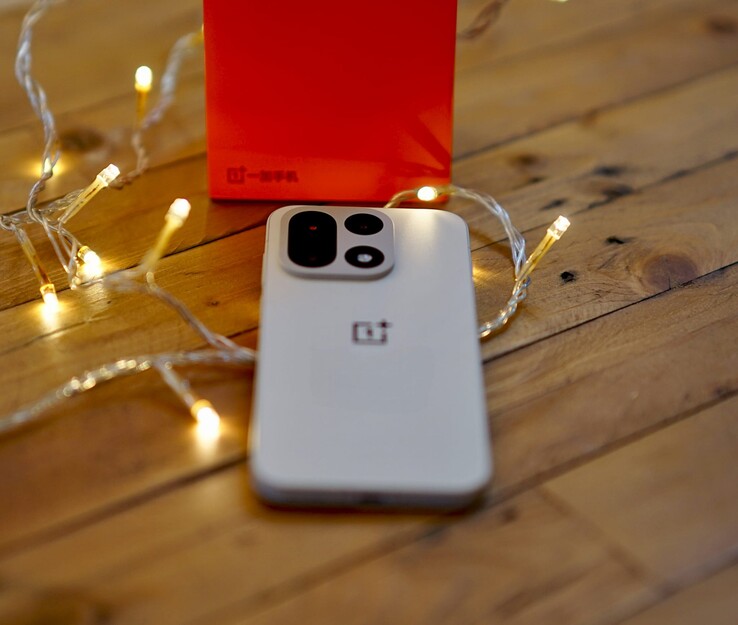
OnePlus 15
- 11/25/2025 v8
Florian Schmitt
Possible alternatives compared
Image | Model / Review | Price | Weight | Drive | Display |
|---|---|---|---|---|---|
| OnePlus 15 Qualcomm Snapdragon 8 Elite Gen 5 ⎘ Qualcomm Adreno 840 ⎘ 16 GB Memory, 512 GB | Amazon: 1. $799.99 OnePlus 13,16GB RAM + 512GB ... 2. $8.99 Suttkue for OnePlus 15 Scree... 3. $9.99 ottpluscase [2 Pack Screen P... List Price: 999€ | 215 g | 512 GB UFS 4.1 Flash | 6.78" 2772x1272 450 PPI AMOLED | |
| OnePlus 13 Qualcomm Snapdragon 8 Elite ⎘ Qualcomm Adreno 830 ⎘ 16 GB Memory, 512 GB | Amazon: 1. $799.99 OnePlus 13,16GB RAM + 512GB ... 2. $549.99 OnePlus 13R, 12GB RAM + 256G... 3. $11.99 JZG 3 Pack Screen Protector ... List Price: 720€ | 213 g | 512 GB UFS 4.0 Flash | 6.82" 3168x1440 510 PPI AMOLED | |
| Oppo Find X9 Pro MediaTek Dimensity 9500 ⎘ Arm Mali G1- Ultra MC12 ⎘ 16 GB Memory, 512 GB | Amazon: 1. $7.99 Lucyliy (3 Pack) Compatible ... 2. $6.67 FZZSZS (3-Pack Screen Protec... 3. $9.99 Shantime [2 Pack Tempered Gl... List Price: 1299€ | 224 g | 512 GB UFS 4.1 Flash | 6.78" 2772x1272 450 PPI LTPO AMOLED | |
| Samsung Galaxy S25 Ultra Qualcomm Snapdragon 8 Elite for Galaxy ⎘ Qualcomm Adreno 830 ⎘ 12 GB Memory, 256 GB | Amazon: 1. SAMSUNG Galaxy S25 Ultra, 25... 2. $919.50 SAMSUNG Galaxy S25 Ultra SM-... 3. $1,120.00 Samsung Galaxy S25 Ultra ... List Price: 1449€ | 218 g | 256 GB UFS 4.0 Flash | 6.90" 3120x1440 498 PPI Dynamic AMOLED 2X | |
| Xiaomi 17 Pro Max Qualcomm Snapdragon 8 Elite Gen 5 ⎘ Qualcomm Adreno 840 ⎘ 16 GB Memory, 1024 GB | Amazon: 1. $8.19 Anoowkoa 3 Pack Glass Screen... 2. $9.90 Anbzsign 2+1 Pack for Xiaomi... 3. $14.53 INIU for iPhone 17 Charger, ... List Price: 940€ | 219 g | 1TB UFS 4.1 Flash | 6.90" 2608x1200 416 PPI AMOLED |
Transparency
The selection of devices to be reviewed is made by our editorial team. The test sample was provided to the author as a loan by the manufacturer or retailer for the purpose of this review. The lender had no influence on this review, nor did the manufacturer receive a copy of this review before publication. There was no obligation to publish this review. As an independent media company, Notebookcheck is not subjected to the authority of manufacturers, retailers or publishers.
This is how Notebookcheck is testing
Every year, Notebookcheck independently reviews hundreds of laptops and smartphones using standardized procedures to ensure that all results are comparable. We have continuously developed our test methods for around 20 years and set industry standards in the process. In our test labs, high-quality measuring equipment is utilized by experienced technicians and editors. These tests involve a multi-stage validation process. Our complex rating system is based on hundreds of well-founded measurements and benchmarks, which maintains objectivity. Further information on our test methods can be found here.




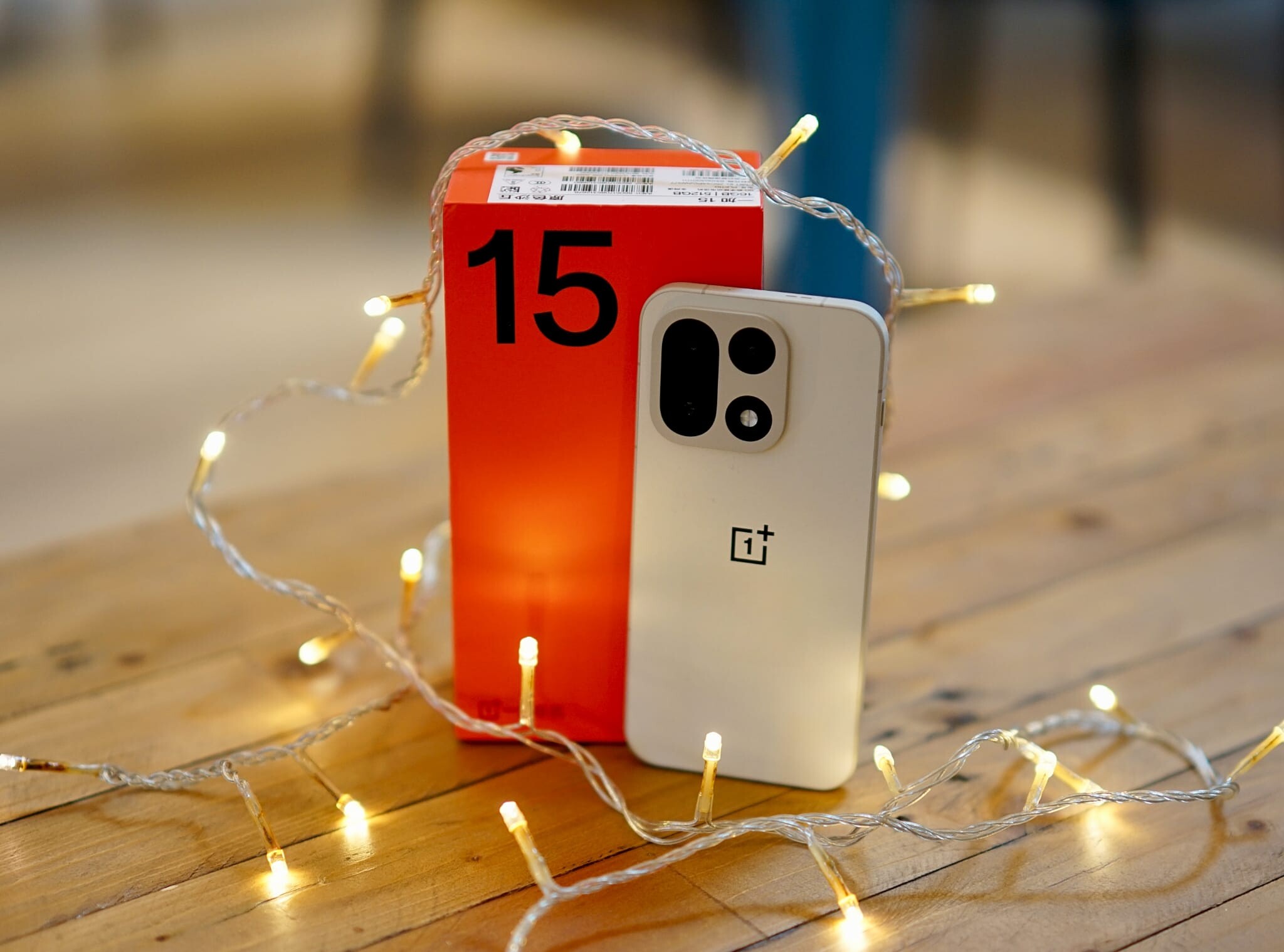

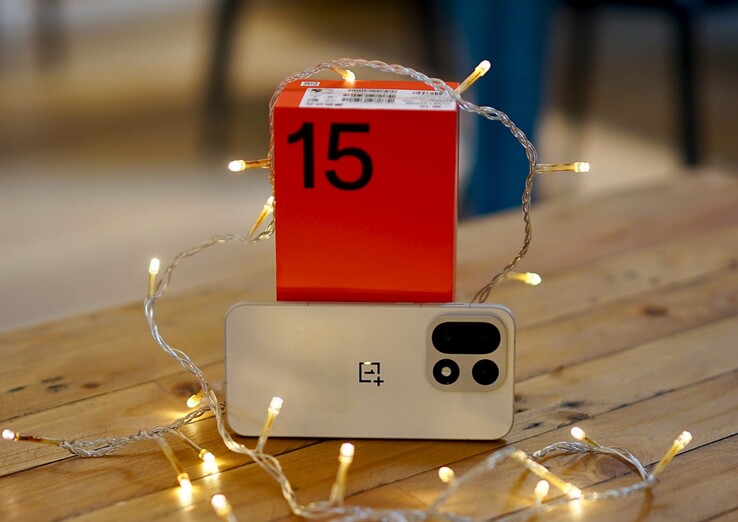









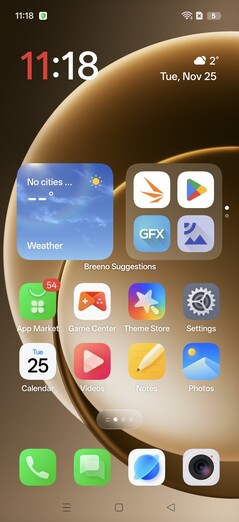
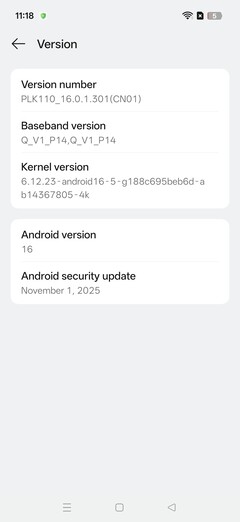
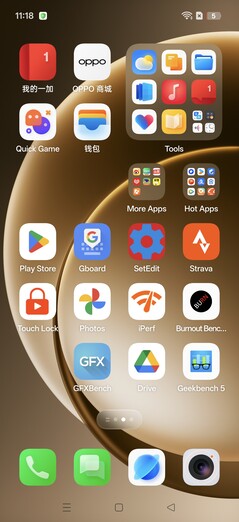


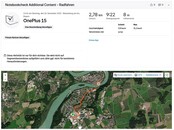







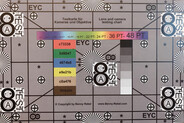

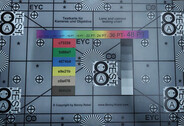










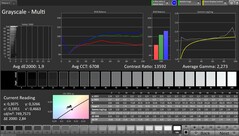
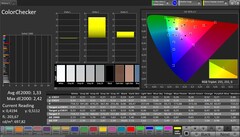


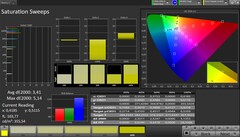
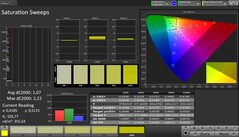

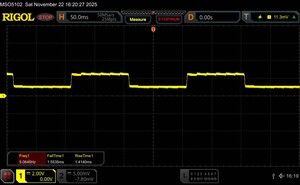

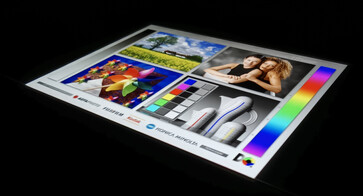


 Total Sustainability Score:
Total Sustainability Score: 








